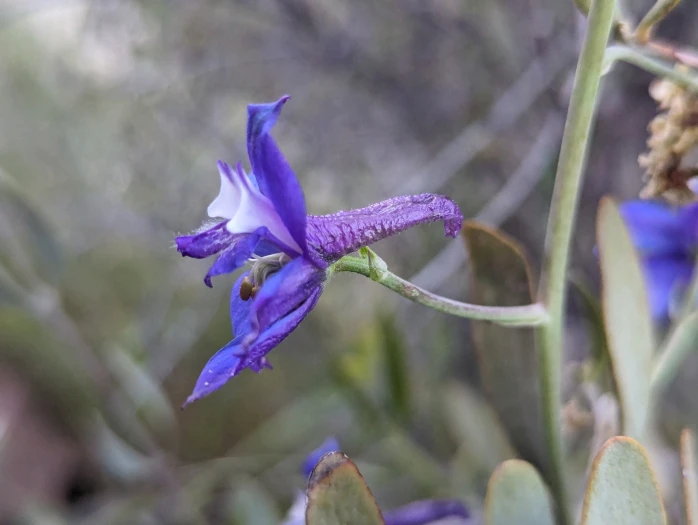Anderson’s Larkspur
(Delphinium andersonii)
Anderson’s Larkspur (Delphinium andersonii)
/
/

Rachel Stringham
CC BY 4.0
Image By:
Rachel Stringham
Recorded By:
Copyright:
CC BY 4.0
Copyright Notice:
Photo by: Rachel Stringham | License Type: CC BY 4.0 | License URL: http://creativecommons.org/licenses/by/4.0/ | Rights Holder: Rachel Stringham | Publisher: iNaturalist | Date Created: 2024-03-29T18:24:59-07:00 |

























Estimated Native Range
Climate Requirements for Eagle Pass, Texas
| This Plant | Your Site | Plant Suitability for Your Location | ||
|---|---|---|---|---|
| • Precipitation | 5" - 69" | 21" | Your precipitation may be too high for this plant. | Too high |
| • High Temp. | 65°F - 107°F | 98°F | Your summer temperatures are normal for this plant. | Excellent |
| • Low Temp. | 4°F - 37°F | 41°F | OK, but your winter temperatures are warmer than normal for this plant | OK |
This plant may not grow well at your location - your precipitation is too high.
Summary
Delphinium andersonii, commonly known as Anderson’s Larkspur, is a perennial herb native to sagebrush steppe ecosystems, mountain meadows, and open coniferous forests of the Great Basin and Sierra Nevada regions. It typically grows up to half a meter tall and is characterized by its deeply lobed, fingerlike leaves. The plant’s striking feature is its cylindrical inflorescence, which showcases dark blue sepals and petals, with a prominent spur that can be nearly two centimeters long. Flowering occurs from late spring to early summer, and the blooms can also appear in light purple or white varieties, all with contrasting yellow anthers, adding to their ornamental appeal.
Anderson’s Larkspur is valued for its vibrant blue flowers, which can add a splash of color to rock gardens, wildflower meadows, and native plant landscapes. It is relatively low-maintenance but requires well-drained soils and thrives in full sun to part shade conditions. While it is drought-tolerant once established, it benefits from occasional watering during prolonged dry spells. Gardeners should be aware that all parts of the plant are toxic if ingested, and it can be susceptible to crown rot in overly wet conditions.CC BY-SA 4.0
Anderson’s Larkspur is valued for its vibrant blue flowers, which can add a splash of color to rock gardens, wildflower meadows, and native plant landscapes. It is relatively low-maintenance but requires well-drained soils and thrives in full sun to part shade conditions. While it is drought-tolerant once established, it benefits from occasional watering during prolonged dry spells. Gardeners should be aware that all parts of the plant are toxic if ingested, and it can be susceptible to crown rot in overly wet conditions.CC BY-SA 4.0
Plant Description
- Plant Type: Herb
- Height: 1-2 feet
- Width: 0.5-1 feet
- Growth Rate: Moderate
- Flower Color: Blue, Purple, White
- Flowering Season: Spring, Summer
- Leaf Retention: Deciduous
Growth Requirements
- Sun: Full Sun, Part Shade
- Water: Low
- Drainage: Fast
Common Uses
Border Plant, Butterfly Garden, Deer Resistant, Low Maintenance, Rock Garden
Natural Habitat
Sagebrush steppe ecosystems, mountain meadows, and open coniferous forests
Other Names
Common Names: Desert Larkspur
Scientific Names: Delphinium andersonii, Delphinastrum andersonii, Delphinium andersoni var. andersoni, Delphinium andersoni var. cognatum, Delphinium andersonii subsp. andersonii, Delphinium andersonii subsp. cognatum, Delphinium andersonii subsp. cognatum, Delphinium andersonii var. cognatum, Delphinium bicolor var. cognatum
GBIF Accepted Name: Delphinium andersonii